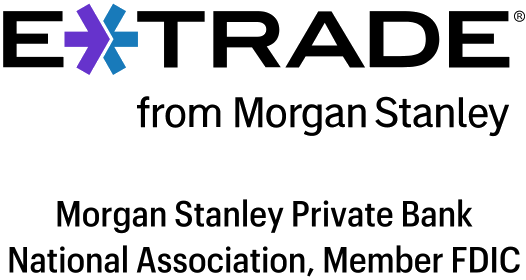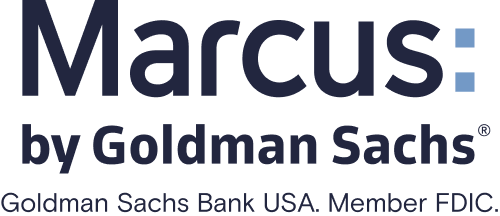Confusion About Overdraft Coverage Can Cost You Dearly

Many, or all, of the products featured on this page are from our advertising partners who compensate us when you take certain actions on our website or click to take an action on their website. However, this does not influence our evaluations. Our opinions are our own. Here is a list of our partners and here's how we make money.
Many consumers have major misconceptions about overdraft coverage on checking accounts, and this confusion could be costing them serious cash, according to a recent NerdWallet study. In fact, a recent Consumer Financial Protection Bureau report shows Americans paid $15 billion in fees for bounced checks and other overdrafts last year.
In this study, we look at what consumers misunderstand about overdrafts and outline several ways your money could go further when you aren’t paying overdraft fees — a difference that’s especially striking among those who tend to overdraw frequently.
Key findings
An online survey of more than 2,000 U.S. adults, commissioned by NerdWallet and conducted online by Harris Poll in August 2017, found that two-thirds of Americans (66%) don’t know that overdraft coverage is optional. And 63% of those who had been charged an overdraft fee were not aware that the fee was optional. Overdraft coverage sounds like a good deal, but it’s usually better to steer clear of it. It means banks may charge you a hefty fee when transactions, including debit card swipes, cause your account to drop below zero. Overdraft coverage for one-time debit card and ATM transactions is optional by law. To get the coverage, you have to opt in.
By opting in to overdraft coverage, the 8 million people who overdraw frequently could wind up paying over $3.5 billion more in fees over the course of a year than they would if they opted out of overdraft coverage. That’s $442 a year for each person who frequently overdraws, according to NerdWallet’s analysis of CFPB data. [1]
That $442 in annual fees could be put to much better use — saved in an emergency fund, socked away in an investment account or added to monthly credit card payments. Consumers could save over $1,600 in interest and 7.5 years in credit card payoff by adding $442 per year to their payments. [2]

Member FDIC
Discover® Cashback Debit

N/A
$0

Deposits are FDIC Insured
Chime® Checking Account

N/A
$0

Member FDIC
Varo Bank Account

N/A
$0

Member FDIC
E*TRADE Max-Rate Checking

3.00%
$15
Overdraft fees can cost you
What are overdraft fees? They’re charged by a bank when a purchase or transfer of funds by a checking account holder makes the balance fall below $0. The bank’s overdraft program covers the transaction, but the account holder is charged a fee. Our survey found almost half of Americans who’ve had a checking account (45%) have been charged an overdraft fee at some point.
Overdraft fees are expensive. According to the Pew Charitable Trusts, the median overdraft fee in the U.S. is $35, and some banks charge unlimited fees per day, one for each overdrawn transaction. (Here’s a little more about the basics of overdraft fees.)
On average, Americans incur 2.07 overdrafts per year. Assuming a fee of $35, that adds up to $72 each year — but those who overdraw frequently pay significantly more.
A 2014 CFPB report shows the median transaction amount on a debit card that leads to an overdraft is $24. Add in the $35 overdraft fee, and the true cost of that transaction is $59.
“If you’re in danger of getting hit with an overdraft fee, then it’s worth asking yourself if your next purchases are really worth the price that you could pay; often the answer is ‘no,’” says Kimberly Palmer, NerdWallet’s in-house expert on credit cards and banking.
Consumers overdraw for a variety of reasons: a transaction goes through unexpectedly, a check isn’t deposited in time or they lose track of how much money they had in the account. According to our survey, many Americans are confused about how overdraft fees work, and they may be incurring the charges partly because of these misconceptions.
Overdraft fees may be charged on small transactions: Although many banks don’t charge overdraft fees on transactions of $5 and under, 2 in 5 Americans don’t know that overdraft fees can be charged on transactions of less than $20, according to our survey. Each bank has its own policy on what counts as an overdraft, but according to our research, banks usually do charge fees on overdraft transactions from $5 to $20.
Banks can charge multiple overdraft fees per day: Our survey found that almost half of respondents (47%) don’t know that a person can be charged more than one overdraft fee per day. However, 90% of the banks we analyzed had policies that allowed for more than one, and 3 in 10 banks charged unlimited fees, one for each transaction that takes or keeps the account balance under $0.
If you opt in to overdraft coverage, your transactions will keep going through and you’ll continue racking up fees.
You can skip overdraft coverage: About 2 in 3 respondents (66%) don’t know that overdraft protection is offered on an opt-in basis. Instead, they think they are enrolled by default and must opt out, or they aren’t sure how it works. If you don’t opt in to overdraft coverage, your debit card purchase or ATM withdrawal will be declined if you attempt to make a transaction for which you don’t have enough funds, letting you know your account balance is low. There may be reasons to to enroll in overdraft coverage, but federal law requires that it be optional, and for people who’ve opted in, it’s possible to get out.
Opt out to save hundreds of dollars per year
The Federal Reserve prohibits banks from auto-enrolling their customers in overdraft coverage. Note that banks can cover recurring debit transactions, automatic payments and checks without your permission. So if a check bounces, you could still be charged what’s called a nonsufficient funds fee, which may cost an amount similar to an overdraft fee.
If you’ve accidentally opted in to overdraft coverage -- or knowingly opted in without understanding the alternative -- you can save money by opting back out, especially if you overdraw frequently.
According to the 2017 report by the CFPB, “frequent overdrafters” -- those who overdraw more than 10 times per year -- made up 9% of all the accounts the agency examined but paid 79% of all overdraft and nonsufficient funds fees. “Very frequent overdrafters” -- those who overdraw more than 20 times per year -- made up about 5% of all the accounts but paid over 63% of all overdraft and nonsufficient funds fees.
The report said the “median frequent overdrafter” (a person who overdraws 18 to 22 times a year) who’s opted in to overdraft coverage incurs $442 more in fees per year than someone who frequently overdraws and is opted out. The CFPB’s report represents 40 million accounts, 20% of which belong to people who overdraw frequently. That means opting in could cost frequent overdrafters up to $3.5 billion more than their opted-out counterparts. [1]
Make your cash go further
According to our survey, nearly 1 in 5 Americans (17%) would rather pay a $35 overdraft fee than have their card declined if they were making a purchase without having enough money in their account. But overdraft fees add up quickly.
Opting out saves frequent overdrafters hundreds of dollars per year and thousands over the years. Although $442 per year may not seem like a lot of money, it can make a significant difference when used toward financial goals.
Building an emergency fund: The Federal Reserve says almost half of Americans (46%) don’t have enough savings to cover a $400 emergency. We found the average American can’t pay for some common emergencies like a new transmission for the car or an emergency room visit [3]. An added $442 per year goes a long way toward making these emergencies easier to cover.
Reducing credit card debt: According to a previous NerdWallet study, the average household with revolving credit card debt carried a balance of $6,885 in June 2016. By making only the minimum monthly payment, this balance would take more than 14 years to pay off. By paying an additional $442 per year, that time period drops to 6.5 years. [2]
Perhaps the most significant impact would be on the interest paid.
The interest owed over time is cut by over $1,600 [2] simply by adding $442 a year, or $36.83 per month, to the minimum payment.
“For most consumers, every dollar matters -- so if you can get ahead of your payments and put down extra, you’ll be giving your budget more wiggle room in the future,” Palmer says. “Those extra payments could be the difference between feeling like you’re getting closer to your financial goals or not.”
Increasing investments: Investing less than $500 a year may seem like a drop in the bucket, but the growth may surprise you. Assuming you invest $442 each year and earn 7% on your investments -- that’s the average annual stock market return since 1950 -- you can earn tens of thousands of dollars over time.
After 30 years of investing $442 per year, you will have saved $13,260, but thanks to the combination of time and compound interest on that investment, you’ll have built it up a total of $43,700. That’s over $30,000 in growth alone.
Savings, debt payoff and investments are just three places where money spent on overdrafts could serve you better. Even if you don’t pay this much in overdraft fees, it’s a great example of how far your dollars can go when directed toward your financial goals.
What you can do
When looking for a bank or credit union, pick one with low or no overdraft fees. According to our analysis, the lowest fees tend to come from online-only banks and credit unions, which on average charge $9 less for an overdraft than national and regional banks. [4] Some of these institutions forgo overdraft fees altogether and simply decline transactions if customers don’t have enough money in their accounts. (Jump to links for more information on these financial institutions.)
“Don’t just go with the easiest option or the bank that’s most familiar to you -- spend some time checking out your options, because you might find the best fit for you is a bank you haven’t considered using before,” Palmer says.
Opt out of overdraft coverage and look for a bank whose overdraft protection includes free transfers from a linked savings account or a low-cost line of credit. Frequent overdrafters who opt out of overdraft coverage save hundreds of dollars in overdraft fees per year compared with those who opt in. If you want all your transactions to go through no matter your balance, choose a bank that has free overdraft transfers between your checking and savings account. An overdraft line of credit is another option. Some banks allow you to finance overdrafts -- you pay interest only on the amount you’re overdrawn. Because the interest rate is annual, the daily expense is extremely low, especially compared with the average cost of overdraft fees.
Build your emergency fund. Focus on saving money in a high-yield savings account that can double as an emergency fund and, by linking it with your checking, can be used as a buffer account. But don’t make a habit of relying on your savings -- you should aim to keep enough in checking to cover your expenses.
Set up text or email alerts for low balances. Many banks can alert you when your account balance goes under a certain amount. Set up alerts on your bank’s website so that you’ll get an email or text when your balance starts getting too low for comfort.
The overall aim is to know the details of your bank’s overdraft policies and, if you don’t like them, to choose a bank with better policies. Look for an institution with low or no overdraft fees and alternative overdraft protection -- such as free savings account transfers and overdraft lines of credit. Also, build up a cash buffer, and sign up for bank alerts so you can know when your balance gets too low.
Compare banks for fewer fees, better rates:
METHODOLOGY
The survey referenced was conducted online within the U.S. by Harris Poll on behalf of NerdWallet from Aug. 15 to 17, 2017, among 2,001 U.S. adults age 18 or older. This online survey is not based on a probability sample and, therefore, no estimate of theoretical sampling error can be calculated. For complete survey methodology, including weighting variables, please contact [email protected].
NerdWallet reviewed internal and external data sources. Internal data has been identified as such throughout this study. The external data sources are available online publicly:
Board of Governors of the Federal Reserve System, “Report on the Economic Well-Being of U.S. Households in 2015,” May 2016
CNN, “Americans paid $15 billion in overdraft fees last year, CFPB says,” Aug. 4, 2017
Consumer Financial Protection Bureau, “Data Point: Checking account overdraft,” July 2014
Consumer Financial Protection Bureau, “Data Point: Frequent Overdrafters,” August 2017
Federal Reserve Bank of St. Louis, “Disposable Personal Income: Per capita: Current dollars”
Federal Reserve Bank of St. Louis, “Personal Saving Rate”
The Pew Charitable Trusts, “Consumers Need Protection From Excessive Overdraft Costs,” December 2016
Footnotes
[1] The CFPB report looked at 240,000 active accounts, around 48,000 (20%) of which belonged to frequent overdrafters — those who overdraw more than 10 times per year. The data are representative of more than 40 million accounts, so we estimated that 8 million of these accounts (20%) belonged to frequent overdrafters. If they each paid $442 in overdraft fees for one year, that’s $3.536 billion.
[2] We assumed the minimum payment is 3% of the balance or $20, whichever is higher, and the APR is 14%. With just the minimum payment, it would take 14.08 years to pay off the balance and the interest paid would be $4,140. With the minimum balance and an extra $442 per year, it would take 6.5 years and the interest paid would be $2,490.
[3] According to the Federal Reserve Bank of St. Louis, the average disposable personal income from January to July 2017 was $44,000 and the average personal savings rate was 3.76%, making the average American’s savings $1,653 per year. Personal savings rate is the percentage of disposable personal income a person saves. This amount may be saved in savings accounts, investments, certificates of deposit, etc., but for the purposes of this analysis, we assumed total personal savings were being held in a savings account. For the purposes of this study, we assumed the average savings of $1,653 was static — the balance wasn’t gradually increased and nothing was taken out during the year. To estimate the average costs of emergency expenses, we found the average costs of a transmission, water heater and emergency room visit.
[4] We looked at 33 online banks and credit unions, and 27 national and regional banks. The average overdraft fees are $26 and $34 rounded, respectively.







